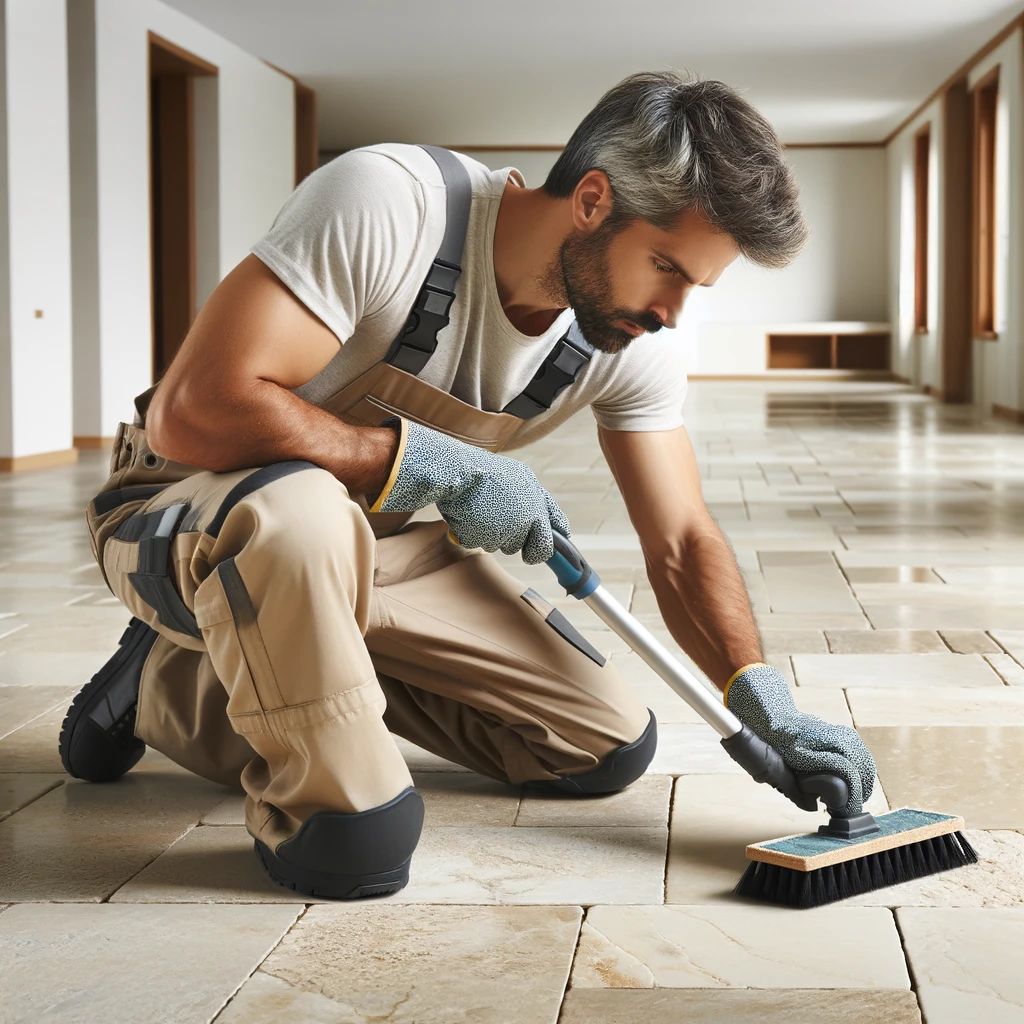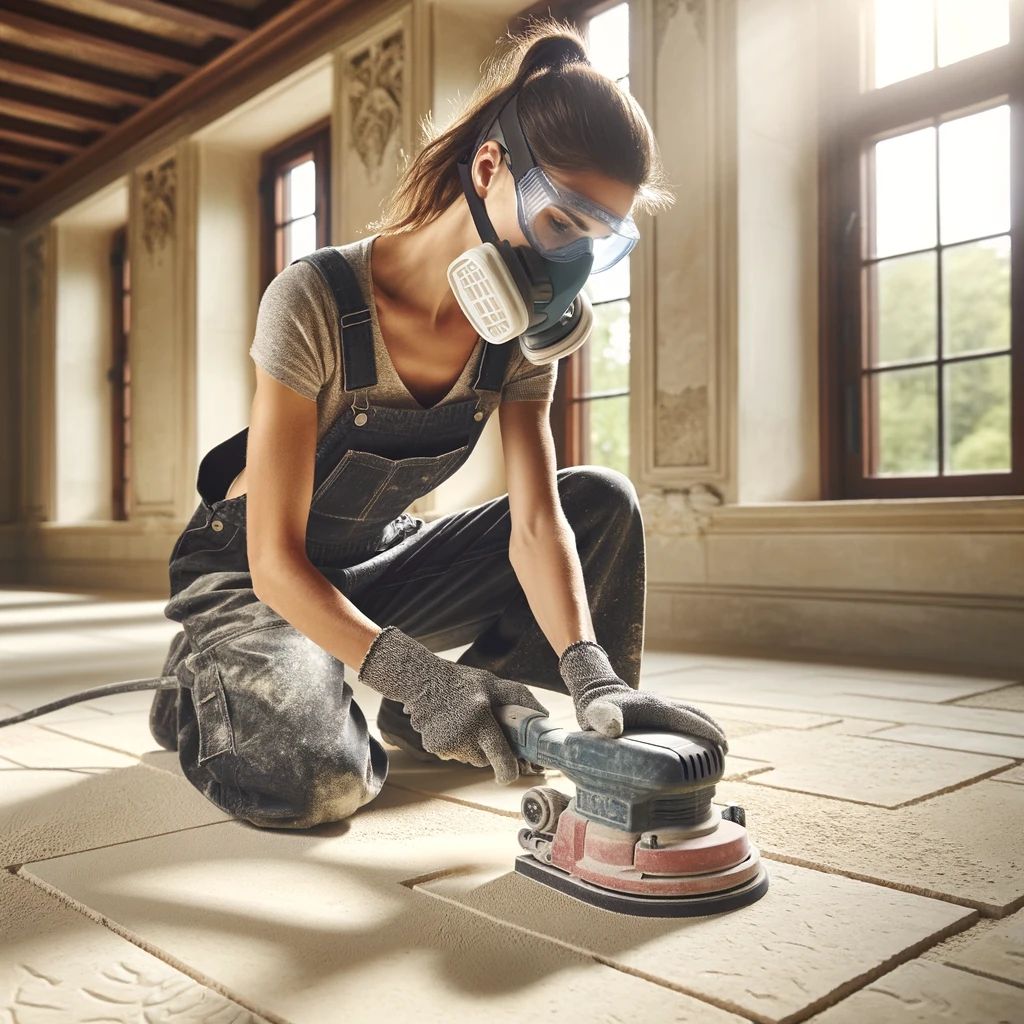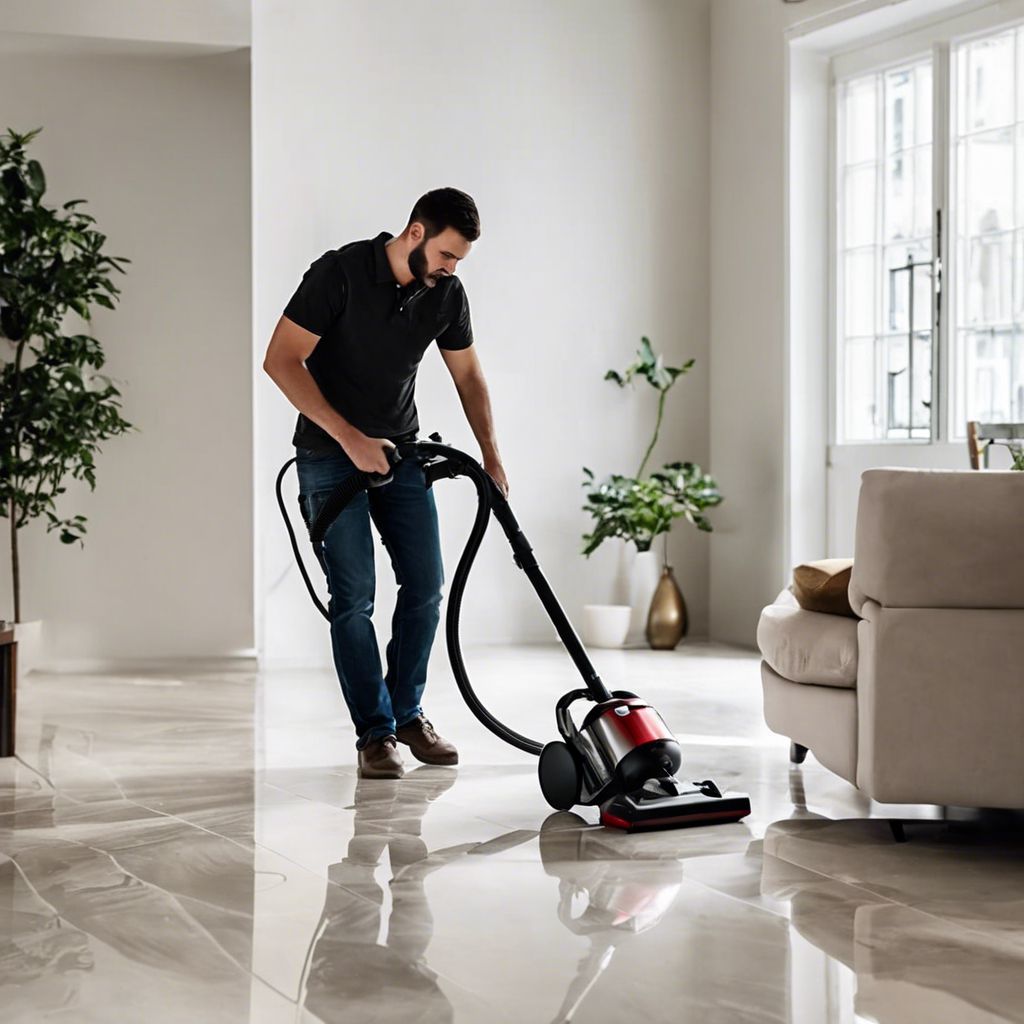
Key Takeaways
- Limestone tile flooring adds a classic touch to your home and can last a lifetime with proper care.
- Refinishing your limestone flooring every few years helps maintain its durability and appeal.
- Preparation is key: Gather all necessary materials before starting the refinishing process.
- Follow a step-by-step guide to effectively refinish your limestone tiles, from cleaning to sealing.
- Maintain your newly refinished floor with regular cleaning and prompt spill management.
The Timeless Appeal of Limestone Tile Flooring
Limestone tile flooring isn’t just a feature of your home; it’s a statement. Its natural beauty, with unique patterns and warm tones, can transform any room into a showcase. But like all good things, it needs a bit of care to keep it looking its best. That’s where refinishing comes into play. It breathes new life into your floors, ensuring they remain as stunning as the day they were laid.
Renew and Revitalize: The Benefits of Refinishing Limestone Tile Flooring
Let’s talk about why refinishing your limestone flooring is worth the effort. First off, it extends the life of your floors by providing a fresh protective layer against wear and tear. It also enhances the natural color that may have dulled over time. And let’s not forget, a well-maintained floor can boost your home’s value. Most importantly, it’s a project you can take pride in doing yourself.
Laying the Groundwork: What You Should Know Before Starting
Before diving into the nitty-gritty, it’s important to understand the stone you’re working with. Limestone is porous, which means it’s susceptible to stains and damage if not properly sealed. It’s also relatively soft compared to other natural stones, so handle it with care to avoid scratches and chips.
Gather Your Materials
Now, let’s gear up. You’re going to need a comprehensive list of materials and tools.
- Acid-free stone cleaner
- Soft brush or mop
- Non-abrasive scrubbing pads or brushes
- Grout filler and tools
- Sandpaper or a sanding block or orbital sander
- Honing powders or pads
- Stone sealer suitable for limestone
- Protective gear like gloves and goggles and a mask
- Plastic tarpaulins to protect surrounding areas
Remember, using the right products is essential to avoid damaging your limestone tiles. So, stick to cleaners and sealers designed specifically for natural stone.

DIY Refinishing Limestone Tile Floor Steps
Refinishing your limestone tile floor can breathe new life into your space, restoring its natural beauty and durability. It might seem tricky, but doing it yourself can be both fun and budget-friendly. With the right steps and tools, you can get pro-level results and make your floors look like new.
Step 1: Assessment
Start by assessing the current state of your flooring. Look for any cracks, chips, or stains that need attention. This will help you determine the extent of the refinishing needed. If your tiles are in good shape, a simple clean and seal might do. However, if there’s visible damage, you’ll need to include repairs in your refinishing plan.
Step 2: Prepping Your Limestone Tile
Preparation is everything. Move furniture out of the way and lay down tarpaulins to protect your baseboards and walls from any splashes. Ensure the room is well-ventilated, too, as some sealers can have strong odors. Then, give your floor a good sweep or vacuum to remove any loose debris.
Step 3: Ensuring a Clean Base
Next up, cleaning. Using your acid-free cleaner, gently scrub the tiles. Avoid harsh chemicals or vinegar-based solutions as they can etch the stone. Rinse with clean water and allow the floor to dry completely. A dry surface is critical before moving on to the next steps.
Stripping Away Old Sealants
If your floor was previously sealed, you’ll need to strip the old sealant off. Apply a commercial stone floor stripper according to the manufacturer’s instructions. Be patient; depending on the product, it may take some time to break down the old sealer.
This cleaning process usually involves using pH-neutral stone cleaners and warm water, and scrubbing the surface with a soft brush or mop to remove all residues. If the old sealant or wax is really tough to get off, you might need special stone sealant removers or strippers to completely remove them before you start refinishing.
Remember, the effort you put into refinishing your limestone flooring will pay off in the long run with a floor that’s as beautiful as it is durable.
Step 4: Repairing the Damage
Address any cracks, chips, or damaged areas on the limestone tiles. Use a limestone repair kit or filler recommended for natural stone surfaces. Allow the repairs to dry completely.
Grout Troubleshooting
Grout isn’t just a filler; it plays a key role in the integrity of your tile flooring. Over time, grout can become discolored, cracked, or start to crumble. If you notice any of these issues, address them before you continue with the refinishing process. Remove loose or damaged grout with a grout saw or similar tool, and then apply a new grout mixture. Make sure it’s the right color to match your existing grout for a seamless look.
After applying the new grout, wait for it to set according to the product instructions. This usually takes about 24 hours. Once set, wipe away any excess with a damp cloth. Now your limestone tiles are surrounded by fresh grout, giving them a solid base and a clean look.
Step 5: The Sanding Process
With your limestone tile and grout ready, it’s time to sand. Sanding is essential for removing any surface stains and scratches. It also helps to create a smooth base for the new sealer to adhere to. Use a hand sander or orbital sander with a diamond sanding pad for the best results.
Sanding for a Smooth Surface
Begin with a coarse grit to remove any rough areas and work your way up to a finer grit for a smooth finish. Always sand in a circular motion and keep the sander moving to avoid creating grooves in the stone. It’s a bit of elbow grease, but it’s worth it for the end result.
Choosing the Right Grit
The grit of the sandpaper is like the flour in a cake recipe – it has to be just right. Start with a lower grit, around 60 to 80, and then gradually move to a higher grit, up to 200 or higher. This gradual process ensures a smooth finish without damaging the limestone.
After sanding, clean the floor thoroughly to remove all the dust. This will prepare the surface for the next important step – honing.
Grinding
If your limestone tiles are uneven or have deeper scratches, you may need to use a grinding tool. Grinding should be done with care, as it can remove a significant amount of stone. It’s a process best reserved for severely damaged tiles or for evening out the level of the floor.

Step 6: Honing
Honing is the process that follows sanding, intended to further smooth the stone and start to bring out its natural shine. Use honing powders or pads specifically designed for limestone. Apply them with a low-speed polisher or by hand with a soft cloth, working in small sections to ensure an even finish.
Step 7: Polishing
Now it’s time to polish your limestone tiles to a beautiful shine. Polishing powder or compound can be applied with a soft cloth or with a polishing machine. Remember, limestone is sensitive, so always use a product recommended for use on limestone and follow the instructions closely.
Polishing not only enhances the look of your limestone but also adds a protective layer against minor spills and abrasions. Work in small sections, and don’t rush this step. The patience you put in here will be evident in the mirror-like finish of your floors.
Step 8: Sealing the Deal
Sealing is the final step in the refinishing process and arguably the most important. It’s what protects your limestone from stains and damage in the future. Choose a high-quality impregnating sealer designed for natural stone, and especially for limestone, which will penetrate the stone’s surface and offer protection from within.
Selecting the Best Sealant for Limestone
There are many sealants on the market, but not all are suitable for limestone. Look for a sealant that’s non-yellowing, breathable, and offers a natural finish. Avoid anything that’s too glossy, as it can create a slippery surface and may not suit the natural aesthetic of limestone.
Applying the Sealant Evenly
Apply the sealant with a soft cloth or a sealer applicator, working in small sections to ensure even coverage. Allow the first coat to penetrate the stone for the time recommended by the manufacturer, then apply a second coat if needed. Avoid walking on the floor until the sealer has fully dried.
Curing Time
After sealing, give the floor time to cure. This can take anywhere from a few hours to a couple of days, depending on the product and the conditions in your home.
Most sealers will need at least 24 hours to cure fully, but this can vary. Check the label on your sealer for the recommended curing time. During this period, keep the floor dry and free from foot traffic. It might test your patience, but giving the sealer time to do its job will pay off in the long run with a floor that’s as durable as it is beautiful.

After Care: Maintaining Your Refinished Limestone Tile
Now that your limestone tiles look brand new, let’s keep them that way. Regular maintenance is the secret to preserving their elegance. Sweep or vacuum frequently to remove dirt and grit that can scratch the surface. For mopping, use a damp mop with a pH-neutral cleaner formulated for natural stone. And here’s a pro tip: dry the floor with a soft cloth after mopping to prevent water spots.
Daily Cleaning Tips
For your daily cleaning routine, keep it simple and gentle:
- Swiftly sweep away debris.
- Use a damp mop with a stone-safe cleaner.
- Immediately dry the floor to prevent water spots.
Dealing With Spills and Stains
Accidents happen, but with limestone, you need to act fast. Blot spills immediately with a clean cloth to prevent them from penetrating the stone. For tough stains, use a poultice—a paste made from a mixture of a stain-removing agent and a liquid. Apply it to the stain, cover with plastic wrap, and let it sit until it dries. Then, gently remove it, and the stain should lift right out.

Frequently Asked Questions (FAQ)
How often should limestone tiles be refinished?
It’s generally recommended to refinish limestone tiles every five years or so, depending on the amount of foot traffic and the level of wear and tear. Keep an eye on the condition of your floor, and when you start to notice dullness or scratches, it’s time for a touch-up.
Can I refinish limestone tiles without professional help?
Yes, with the right tools and a careful approach, you can refinish limestone tiles on your own. It’s a rewarding project that can save you money and give you a sense of accomplishment. Just make sure to follow each step meticulously and use products designed for limestone.
What are the risks of DIY limestone tile refinishing?
DIY refinishing can be risky if you’re not well-informed. The biggest dangers are using the wrong products, which can damage the stone, and not following proper procedures, which can lead to an uneven finish. But if you educate yourself and take your time, you can mitigate these risks and achieve great results.
How do I choose the proper sealant for my limestone tiles?
Select a sealant that’s specifically designed for natural stone and is suitable for limestone. Look for non-yellowing, breathable options that provide a natural finish. Always read the label and choose a product with good reviews from other limestone owners.
What should I do if my tiles do not look uniform after refinishing?
If your tiles look uneven after refinishing, it’s often due to inconsistent sanding or polishing. Revisit the areas that look different, and make sure to sand and polish them to match the rest of the floor. Consistency is key, so take your time and work methodically.
With these steps, tips, and maintenance advice, your limestone tile flooring will not only look stunning but will also stand the test of time. Remember, the beauty of your home is in your hands, and with a little effort, you can keep it looking great for years to come.





Leave a Reply